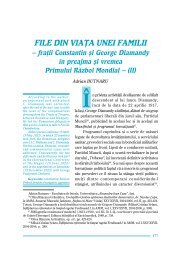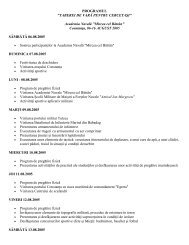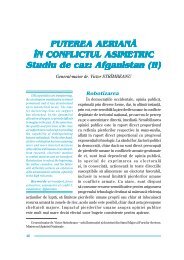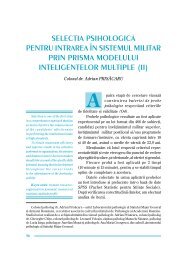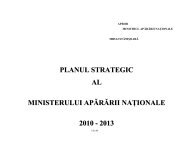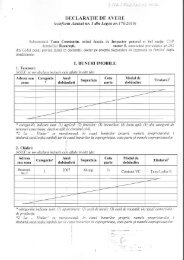Create successful ePaper yourself
Turn your PDF publications into a flip-book with our unique Google optimized e-Paper software.
An exceptional importance for the reconstitution<br />
of Greek life in North-Western Pontus had the<br />
excavations started in 1914, at Histria, by Vasile<br />
Pârvan (1882-1927), the founder of Romanian scientific<br />
archeology.<br />
Istros or Istropolis – the city on the river Istros<br />
by excellence – Histria or Histros for Romans, was<br />
according to tradition a colony of Miletos, established<br />
after Eusebios-Hieronymos, in the year 657<br />
B.C. With less precision Pseudo-Scymnos dated the<br />
moment in the second part of the VII th Century<br />
B.C., thus allowing the archeological support of<br />
ceramic pieces of Ionic imported poteries 14 as well.<br />
For the impact of the Milesian implantation in<br />
these lands the burial ceremony is very significant,<br />
since the VI th Century B.C. in tomb necropolis<br />
around Histria of some Getic leaders. 15 This is a<br />
proof of the normal relation with Getic population,<br />
of leaders’ aspirations towards the Hellenic civilization,<br />
visible also under other Pontic horizons.<br />
However, the growing prosperity of the Milesian<br />
colony in the next two centuries after establishment<br />
is explained by the active commerce with<br />
natives and by the possibility of relatively peaceful<br />
exploitation of the rural domain (chora), which<br />
gradually the city succeeded to take over. Oil,<br />
wines, handicrafts imported or manufactured by<br />
Istros colony penetrated further the great river,<br />
being profitably traded for cereals, honey, furs,<br />
skins, slaves, and especially fish, articles extremely<br />
necessary to Greece and Ionia.<br />
This first stage of evolution was marked by the<br />
great Persian expedition of King Darius, against the<br />
Scythians (513 B.C.), to which were associated the<br />
devastation traces in the archeological sectors of the<br />
Sacred and X zones from Histria. This supposition is<br />
sustained by some funerals in Histrian necropolis and<br />
also by the narration of the Iranian expedition, the<br />
construction of the transdanubian ship bridge taking<br />
place, according to Herodotus, at the mouths of the<br />
Danube, and the army of Darius marching Peuce<br />
island toward the North Pontic steppes.<br />
Reconstruction will not delay, toward the year<br />
480 B.C. the city released its first coins, obvious<br />
sign of a prosperous economic life. It was not exempt<br />
of internal shakings provoked by the accumulation<br />
of notable wealth in hands of a few families<br />
of merchants, ship-owners, bankers, and land<br />
owners, an oligarchy that understood to take over<br />
the political leadership as well. Instauration of democracy<br />
took place under these conditions with<br />
violence and sustained probably by Athens, organizer<br />
during the Peloponnesian war of the known<br />
maritime periplus of Pericles in Pontus (436 B.C.).<br />
The IV th Century had to be perturbed, after its<br />
first half, both by the penetration into Dobroudja<br />
• A part of the<br />
Northern precinct<br />
of Callatis<br />
10 ����� Review of Military History �����




